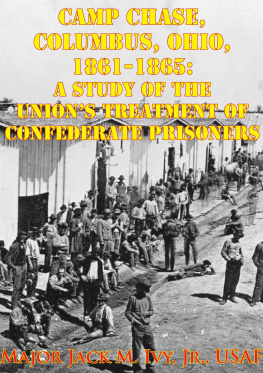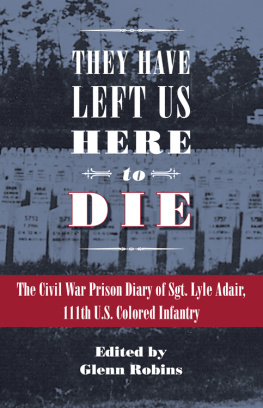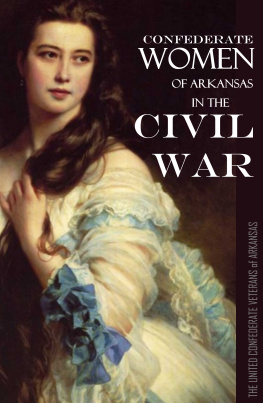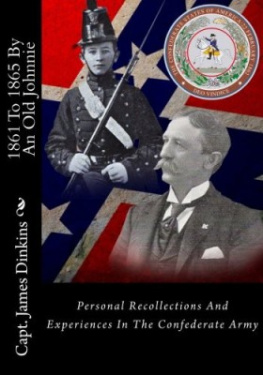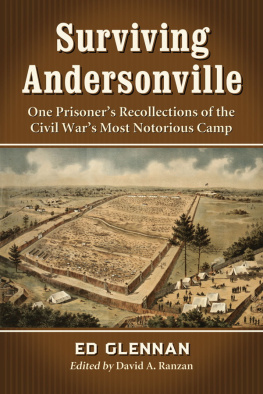

This edition is published by PICKLE PARTNERS PUBLISHINGwww.picklepartnerspublishing.com
To join our mailing list for new titles or for issues with our books picklepublishing@gmail.com
Or on Facebook
Text originally published in 1990 under the same title.
Pickle Partners Publishing 2014, all rights reserved. No part of this publication may be reproduced, stored in a retrieval system or transmitted by any means, electrical, mechanical or otherwise without the written permission of the copyright holder.
Publishers Note
Although in most cases we have retained the Authors original spelling and grammar to authentically reproduce the work of the Author and the original intent of such material, some additional notes and clarifications have been added for the modern readers benefit.
We have also made every effort to include all maps and illustrations of the original edition the limitations of formatting do not allow of including larger maps, we will upload as many of these maps as possible.
CAMP CHASE, COLUMBUS, OHIO, 1861-1865: A study of the Unions treatment of Confederate prisoners of war,
by Major Jack Morris Ivy, Jr., USAF
TABLE OF CONTENTS
Contents
ABSTRACT
Camp Chase, four miles southeast of Columbus, Ohio, began in May 1861 as a mustering center for units entering Union service during the American Civil War. By June 1861 it picked up additional responsibilities of housing Confederate prisoners captured by Ohio units during the earliest military actions of the war. It eventually expanded to hold 9,423 prisoners in January, 1865, which made it one of the larger Union prison camps.
The earliest prisoners were afforded extraordinary leniency by state authorities until the Union government stepped in with rules and regulations. By October 1862, an effective system was in place to secure and care for prisoners. Success continued despite fluxuations in prison population, disease and a constant influx of captured wounded, until August 1864 when rations were reduced in retribution for Confederate treatment of Union captives.
Ration reduction caused prisoners hardships but did not markedly increase mortality. Quality medical care and sanitation kept mortality below Union Army deaths from disease.
As prison population soared during the last months of the war, increasing numbers of wounded, severely exposed and weakened captives joined Camp Chase. Reduced rations continued to pose hardships but ration reduction was offset by superb medical care and sanitation which continued to keep mortality below that experienced by the Union Army from disease.
The study confirms William B. Hesseltines study of prisons in his book, Civil War Prisons: A study in War Psychology, and examines Confederate prisoner of war mortality, comparing it to Union soldier mortality from disease. The thesis concludes that William B. Hesseltines thesis is partially correct when applied to Camp Chase. Prisoners were well treated up to the time rations were reduced in retaliation for alleged Confederate cruelities to Union prisoners. In spite of this, Camp Chase officials continued to stress sanitation and provide clothing late in the war even though they were not obligated to do so. This demonstrated that officials at Camp Chase were successful in managing a prisoner of war camp, even during the period of Union retaliation.
ACKNOWLEDGEMENTS
Dedicated to my loving wife, Dawn Vivian Ivy, whose hard work, interest, inspiration, encouragement, and intellectual partnership in this study made my academic dream reality.
In memory of Private Barry J. Raley, 7th Mississippi Infantry Battalion, Army of Tennessee, Confederate States of America.
A brave soldier and kinsman who still rests in the soil of what was once Camp Chase.
In greatful acknowledgement of my father, Jack Morris Ivy, Sr., whose knowledge awed me as a child and whose intellect continues to challenge and inspire me as an adult.
In appreciation of Mr John A. Reichley, LTC Robert D. Ramsey, III, and Dr. David C; Skaggs who guided me, and kept me focused. They taught me much about in-depth research, analysis, and writing. I deeply appreciate the time and interest they devoted to me throughout the year. The lessons and skills they taught will benefit me for the rest of my life.
In appreciation of the research librarians, Archives-Library of the Ohio Historical Society, Columbus, for the professional assistance given during my research.
I am greatful to the United States Army and the faculty and staff of the Command and General Staff College. I am honored to have been a part of this great institution.
CHAPTER 1 THESIS AND OUTLINE
The Civil War was and still is a controversial period in our nations history. Reasons for the war and policies of the opposing governments continue to stir interest and debate among scholars even today, 135 years after the issue was resolved.. During the war, newspapers carried headlines of atrocities, especially in the Union, after the exchange of prisoners halted and misery multiplied in Confederate prisons not equipped to handle increasing populations. Emotions and tempers flared, then resulted in retribution on both sides.
Treatment of prisoners evoked much emotion from veterans in the years following the conflict. Personal accounts and memoirs were written by former prisoners on both sides. These accounts survived in the form of autobiographies, and articles written for veterans magazines.
Though personal accounts abound, the victor demanded the most attention to the plight of its former prisoners. The Confederacy operated prison camps which are infamous to most Americans. The prisons at Andersonville and Libby stand out as examples of the horrors of prison life in a besieged country. Prisoners suffered because of overcrowding, poor sanitary conditions, and especially from the chronic Confederate shortage of such basic supplies as food, and clothing.
The Union also operated prisoner of war camps. The names Elmira, Johnsons Island, and Camp Chase, however, are unfamiliar to most, even many historians. The purpose of this thesis is to examine one Union camp, Camp Chase, Ohio, to determine how successful officials at Camp Chase were in managing a prisoner of war facility.
How may success be measured? Camp Chase was successful as a detention facility with 38 escapes throughout the war. Its success in this area is unquestioned. That being the case, what other measures of success may be used? Care provided for humane treatment of prisoners, evaluating such factors as food, clothing, medical care, and sanitation is an effective measure. Success in this area may be measured by subjective evaluation of historical facts and an objective evaluation of prisoner mortality, comparing it with Union armies in the field and with other Union prisoner of war camps.
The most balanced and credible study of prisoner of war camps during the American Civil War is William B. Hesseltines book, Civil War Prisons: A Study In War Psychology . His basic thesis is that:
...prisoners [both North and South] were well treated by their captors in the early days of the war. But after the cessation of exchange... the prisons of the South became crowded, and the poverty of the Confederacy resulted in excessive suffering among those unfortunates who were confined in the stockades of Andersonville, Florence, Millen, Macon, and Columbia, or spent dreary days in the famed Libby prison or on Belle Isle. These conditions, being reported in the North created the belief that the prisoners were ill-treated through a deliberate purpose; the inevitable hatred engendered by the war made such a belief readily credible. The result of this psychosis was that prisoners in the Northern prisons were forced to suffer in retaliation for the alleged Southern cruelty.
Next page
